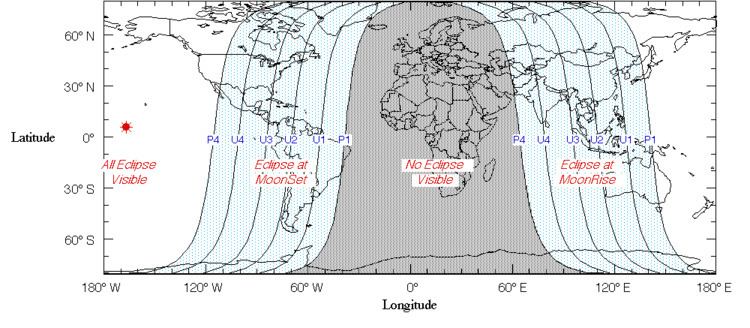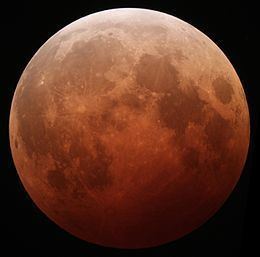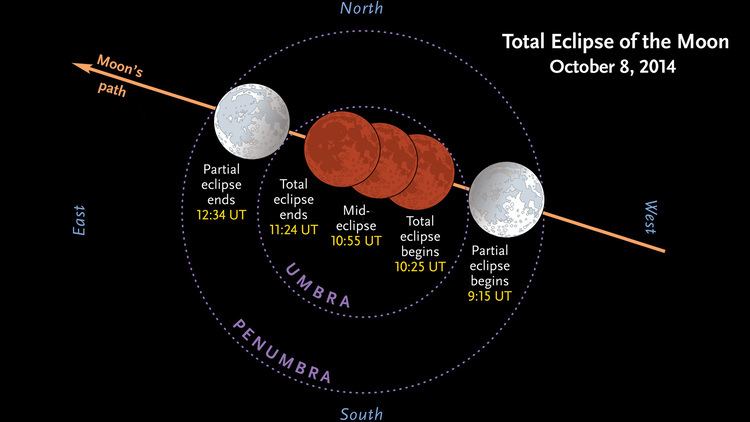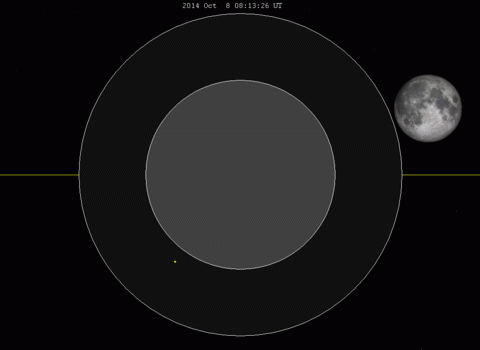Date 8 October 2014 | ||
 | ||
Other Instances April 2099 lunar eclipse | ||
A total lunar eclipse took place on October 8, 2014. It is the second of two total lunar eclipses in 2014, and the second in a tetrad (four total lunar eclipses in series). Other eclipses in the tetrad are those of April 15, 2014, April 4, 2015, and September 28, 2015.
Contents
Visibility and appearance

The eclipse was visible in its entirety over the Northern Pacific. Viewers in North America experienced the eclipse after midnight on Wednesday, October 8, and the eclipse was visible from the Western Pacific, Australia, Indonesia, Japan, and Eastern Asia after sunset on the evening of October 8. Many areas of North America experienced a selenelion, able to see both the sun and the eclipsed moon at the same time.
Background

A lunar eclipse occurs when the Moon passes within Earth's umbra (shadow). As the eclipse begins, the Earth's shadow first darkens the Moon slightly. Then, the shadow begins to "cover" part of the Moon, turning it a dark red-brown color (typically - the color can vary based on atmospheric conditions). The Moon appears to be reddish because of Rayleigh scattering (the same effect that causes sunsets to appear reddish) and the refraction of that light by the Earth's atmosphere into its umbra. The following simulation shows the approximate appearance of the Moon passing through the earth's shadow. The Moon's brightness is exaggerated within the umbral shadow. The southern portion of the Moon was closest to the center of the shadow, making it darkest, and most red in appearance.

The planet Uranus was near opposition (opposition on October 7) during the eclipse, just over 1° from the eclipsed Moon. Shining at magnitude 5.7, Uranus should have been bright enough to identify in binoculars. Due to parallax, the position of Uranus relative to the Moon varied significantly depending on the viewing position on the surface of Earth.
Timing
† The Moon was not visible during this part of the eclipse in this time zone.
The timing of total lunar eclipses are determined by its contacts:

Related eclipses

The eclipse is the one of four total lunar eclipses in a short-lived series at the descending node of the Moon's orbit.
The lunar year series repeats after 12 lunations, or 354 days (shifting back about 10 days in sequential years). Because of the date shift, Earth's shadow will be about 11° west in sequential events.
Half-Saros cycle
A lunar eclipse will be preceded and followed by solar eclipses by 9 years and 5.5 days (a half saros). This lunar eclipse is related to two annular solar eclipses of solar saros 134.
